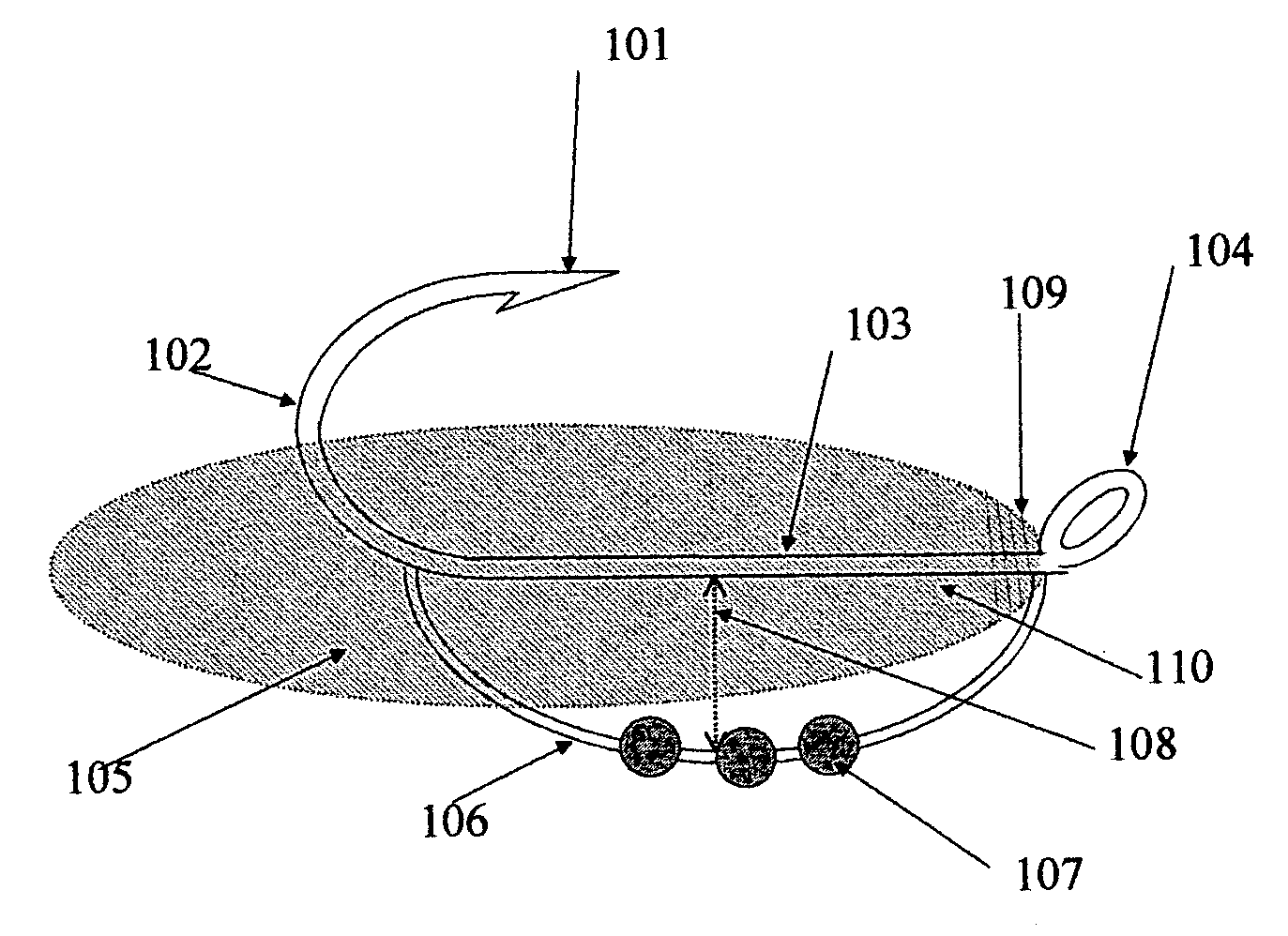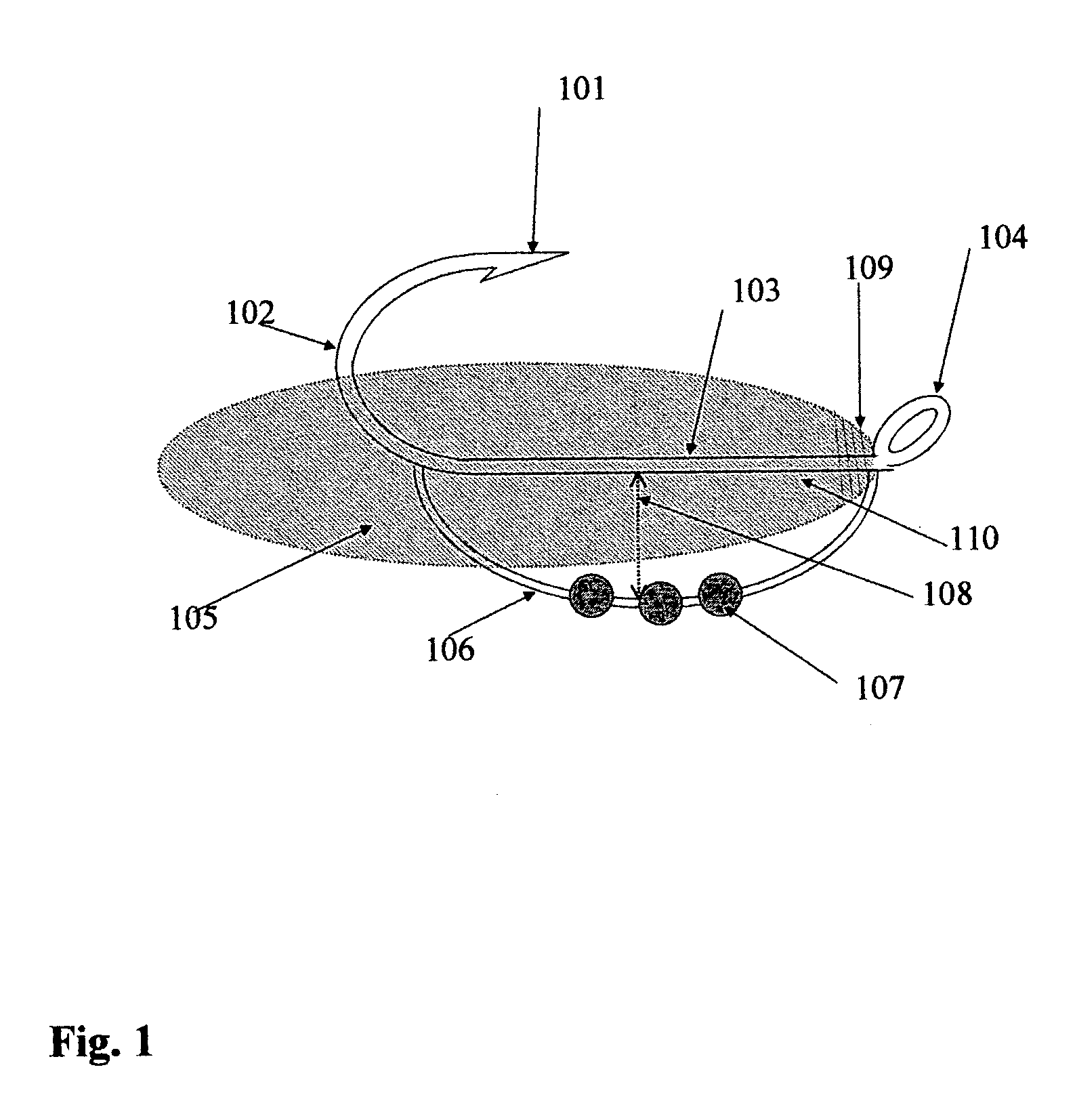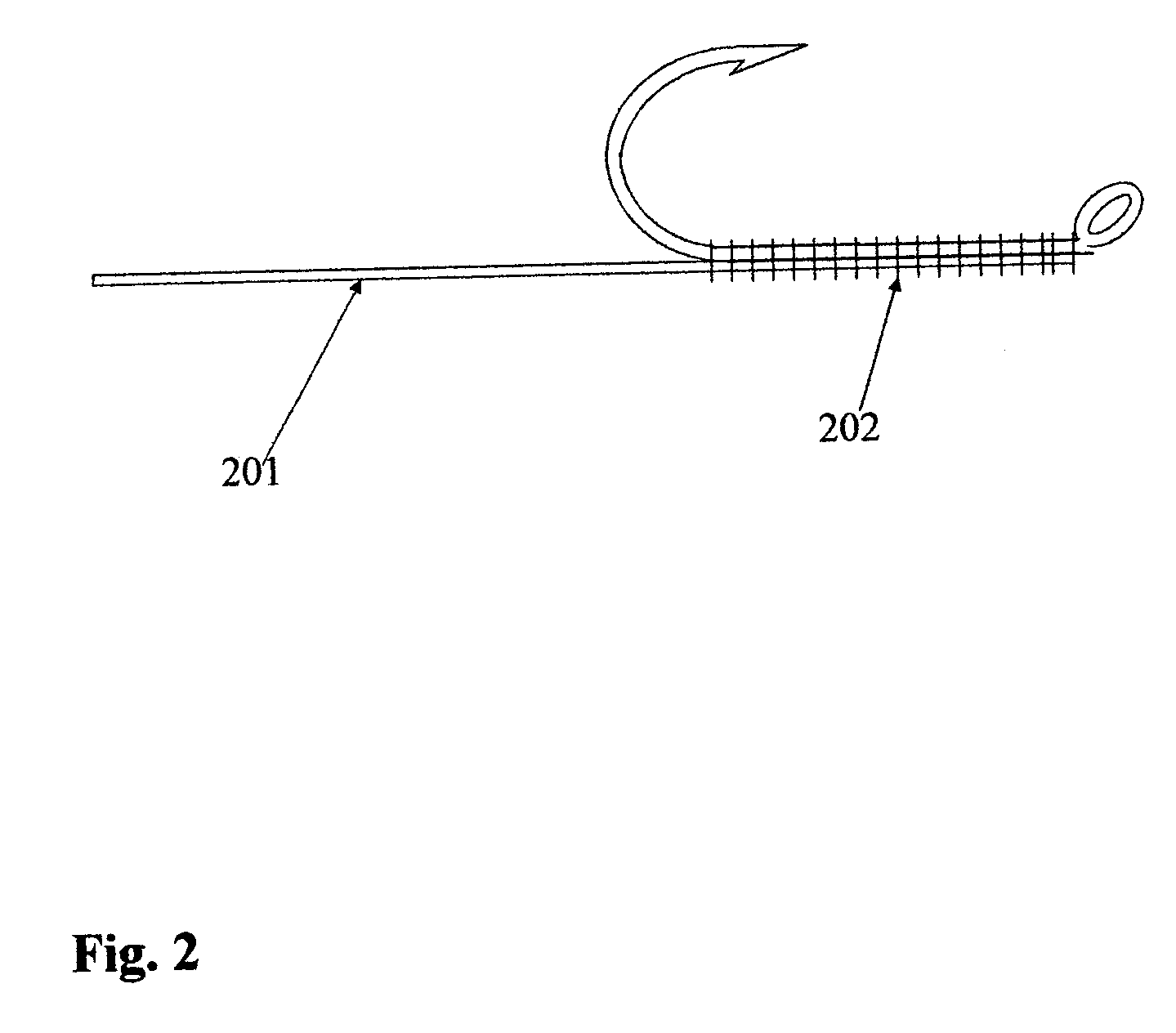Snag-resistant and attractive fishing flies - design and method for construction
- Summary
- Abstract
- Description
- Claims
- Application Information
AI Technical Summary
Benefits of technology
Problems solved by technology
Method used
Image
Examples
Embodiment Construction
[0015] We use the word “Bouncer” to denote a fishing fly made according to the snag-resistant and fish-attracting design disclosed herein. When we refer to a standard pattern made according to the Bouncer technique, we will often prefix the word “Bouncer” with the name of that standard pattern (e.g. WoollyBugger Bouncer, Zonker Bouncer). This description mainly describes a common embodiment wherein the filament is nylon monofilament—commonly known as “mono”—and the weights are flashy beads free to move along the filament, but it is understood that the methods may apply to alternative filaments and weighting materials.
[0016] In one embodiment, FIG. 1, the springy keel (106) is formed from a medium-stiff piece of mono with a number of beads (107) strung along the mono. Because these weights are concentrated on the filament well offset from the shank (103) of the hook, there is a large lever arm (108) and thus significant torque to counter the torque of the hookbend (102) and hook-poi...
PUM
 Login to View More
Login to View More Abstract
Description
Claims
Application Information
 Login to View More
Login to View More - R&D
- Intellectual Property
- Life Sciences
- Materials
- Tech Scout
- Unparalleled Data Quality
- Higher Quality Content
- 60% Fewer Hallucinations
Browse by: Latest US Patents, China's latest patents, Technical Efficacy Thesaurus, Application Domain, Technology Topic, Popular Technical Reports.
© 2025 PatSnap. All rights reserved.Legal|Privacy policy|Modern Slavery Act Transparency Statement|Sitemap|About US| Contact US: help@patsnap.com



